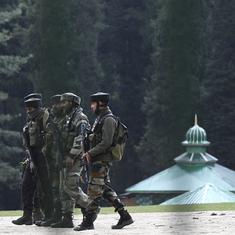In 1970, M Karunanidhi, who was then the chief minister of Tamil Nadu, issued an order that he said would “remove the thorn in the heart” of social reformer Periyar. The order cleared the way for members of all castes to become priests in public temples. For Periyar, this was one of the most important aims of the Dravidian movement, to breach the sanctum sanctorum dominated by the Brahmin community for centuries. However, in 1972, the Supreme Court struck down this move.
When Karunanidhi came to power in 2006, he issued a similar order again. This one, too, was challenged in the Supreme Court. This time, though, the court did not strike it down. In its final ruling in December 2015, the court said that the appointments have to be made according to the Agamas – doctrines that govern temple worship – ensuring the fundamental right to equality is not breached.
Based on this 2006 order, the All India Anna Dravida Munnetra Kazhagam government on March 1 appointed the first non-Brahmin priest to a public temple in the state. The appointment has made news only now. The priest asked Scroll.in not to reveal his name or that of the shrine. He said that he was worried about a backlash.
Priest training programme
The priest said he was one of 206 men trained in government training centres – established in 2007 following the 2006 government order – to become archakas in temples. On completion of the training a year later, they received certificates.
“I saw an advertisement calling for applications,” said the priest. “I attended the interview and was given the appointment.”
Three others who attended the interview were apparently rejected as they did not possess the government-issued certificates. “It was the government certification that clinched the job for me,” the priest added.
V Renganathan, head of the Tamil Nadu Trained Archakas Association, said that while the appointment was a momentous occasion, it had come from an individual effort.
“Since the judgement in 2015, the government has not done anything to give appointments to the 206 trained priests,” he said.
Renganathan added that most of the major Agama temples are still beyond the reach of non-Brahmin priests. Even in the temple where the priest has been appointed, Agama practices have been followed by the existing Brahmin priests but it is unclear if the temple was historically an Agama temple.
Officals at the Hindu Religious and Charitable Endowments department could not be reached. A Tamil scholar who knows the temple well said it was not governed by the Agamas and falls under administration of a historic temple in the same area. The AIADMK could be credited with implementing the reform only when it appoints a non-Brahmin priest to a big Agama temple, he said.
Karunanidhi’s Dravida Munnetra Kazhagam and other Opposition parties in the state have been urging the government to fill vacancies across temples with all the 206 trained priests. But the government had been silent on this demand so far.










